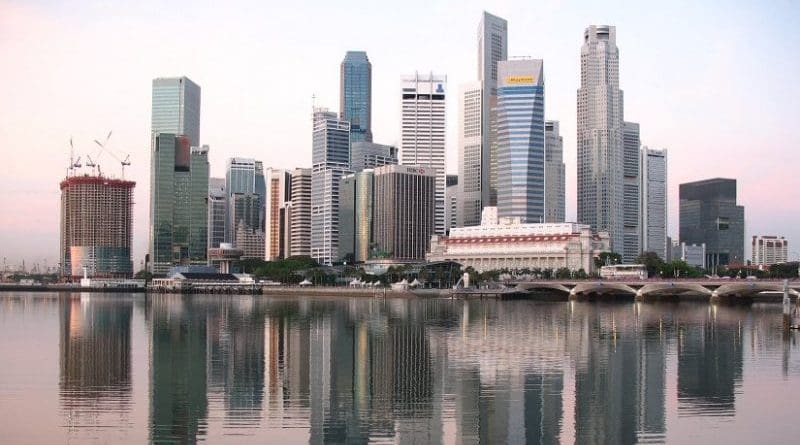Malaysian Election Result Puts Singapore’s Security At A Crossroads – Analysis
By Muhammad Faizal Bin Abdul Rahman
The sweeping political changes in Malaysia following the 14th general election in May 2018 have cast a spotlight on two bilateral projects with Singapore: the Kuala Lumpur–Singapore High-Speed Rail (HSR) and the Johor Bahru–Singapore Rapid Transit System (RTS).
The new Malaysian government plans to either postpone the HSR or replace it with a cheaper alternative. And while it plans to continue the RTS, it would like more time to study the construction requirements such as whether more land needs to be acquired.
Malaysia’s public debt troubles have shifted Malaysia’s stance on mega-infrastructure projects, rendering the expected outcomes and completion dates of the HSR (currently 2026) and the RTS (currently 2024) uncertain, with implications for Singapore’s long-term economic plans.
Yet the additional time that Malaysia needs to weigh its options before proceeding with these projects provides Singapore with a window of opportunity to review the comprehensiveness of the projects’ cross-border security plans. This review would be instrumental in safeguarding Singapore’s homeland security in the long-term.
The current security plans involve Singapore and Malaysia jointly evaluating tender submissions to build and operate the HSR based on criteria that prioritise safety and security. Singapore previously raised its concerns over Malaysia’s proposal for a single border checkpoint between both countries for the HSR and the RTS. Singapore also passed the Cross-Border Railways Bill in March 2018 that enables the appointment of a cross-border railway security agency (CBRSA).
Singapore’s security planners could use the extra time to review the adequacy of security requirements that are stipulated in the tender documents, the border security arrangements at checkpoints and the roles and capabilities of the CBRSA.
In particular Singapore could use the time to consider emergent strategic issues that may shape the security landscape of both countries over the next two decades. As the projects require about a decade to complete, it is crucial that the HSR’s and the RTS’s security systems are designed to meet future rather than present requirements. Emergent strategic issues that affect both countries must be assessed to determine whether the project tenders’ requirements possess the scope and scale to meet future security risks. This assessment of future risks could also buttress Singapore’s existing efforts to enhance regional security.
One area in which these issues may coalesce is demography. By 2030, the number of seniors in Singapore’s population is expected to double. Johor’s population is also expected to grow in size and diversity as more Malaysians migrate to the southern state to take advantage of the employment opportunities that are being born out of Iskandar Malaysia’s (a special economic zone in Johor) rise as a regional hub.
The physical needs of seniors and the challenges associated with monitoring mass movements of people from diverse backgrounds have to be considered in the design of security systems. Designing for the future would help ensure the long-term effectiveness of the security systems in protecting travellers and preventing cross-border threats.
Smart technologies that use data analytics and artificial intelligence for automated CCTV surveillance and threat-oriented passenger screening can help overcome human limitations in securing rail networks. Japan for instance has offered facial recognition technology in its bid for the HSR project.
But security planners must be aware of the challenges associated with technology implementation. Well-defined plans are necessary in order to keep pace with technological advances or systems may become outdated quickly. There should also be plans to gird against insider threats, such as those that emerged in 2016 when several Malaysian immigration officers sabotaged computer systems to allow potential criminals or security threats to pass through the borders undetected.
These plans may help both countries leverage smart technologies to re-engineer immigration clearance processes and achieve a mutually acceptable balance between ensuring border security and facilitating the movement of travellers at the checkpoints.
As greater rail connectivity enables the increased movement of people and creates more pathways for cross-border threats, both countries need to beef up operational capabilities by strengthening bilateral security cooperation. Singapore’s CBRSA may have to update existing channels and procedures for joint law enforcement operations and intelligence sharing. This is crucial in order to address future criminal and security threats effectively as well as manage the heavier border security workload.
Strong bilateral relations at the operational level can act as a bulwark against difficult issues that may emerge during the projects’ development and operational phases. Both countries would have to find the middle ground if there are differences in their security risk assessments and priorities. Singapore’s CBRSA may need to undertake certain measures to ramp up border security on its end if Malaysia faces domestic issues (such as budgetary limitations, changes in civil service personnel or politicking) that impede the joint design of security systems for the HSR and the RTS.
It would serve Singapore’s long-term security as well as bilateral interests to capitalise on the additional time taken to implement both projects by reviewing cross-border security plans. This should be managed carefully as both projects lie at the intersection of international relations and homeland security.
*Muhammad Faizal bin Abdul Rahman is a Research Fellow with the Homeland Defence Programme at the Centre of Excellence for National Security (CENS), S Rajaratnam School of International Studies (RSIS), Nanyang Technological University, Singapore.

